Quantifying the benefits of adding a battery energy storage system
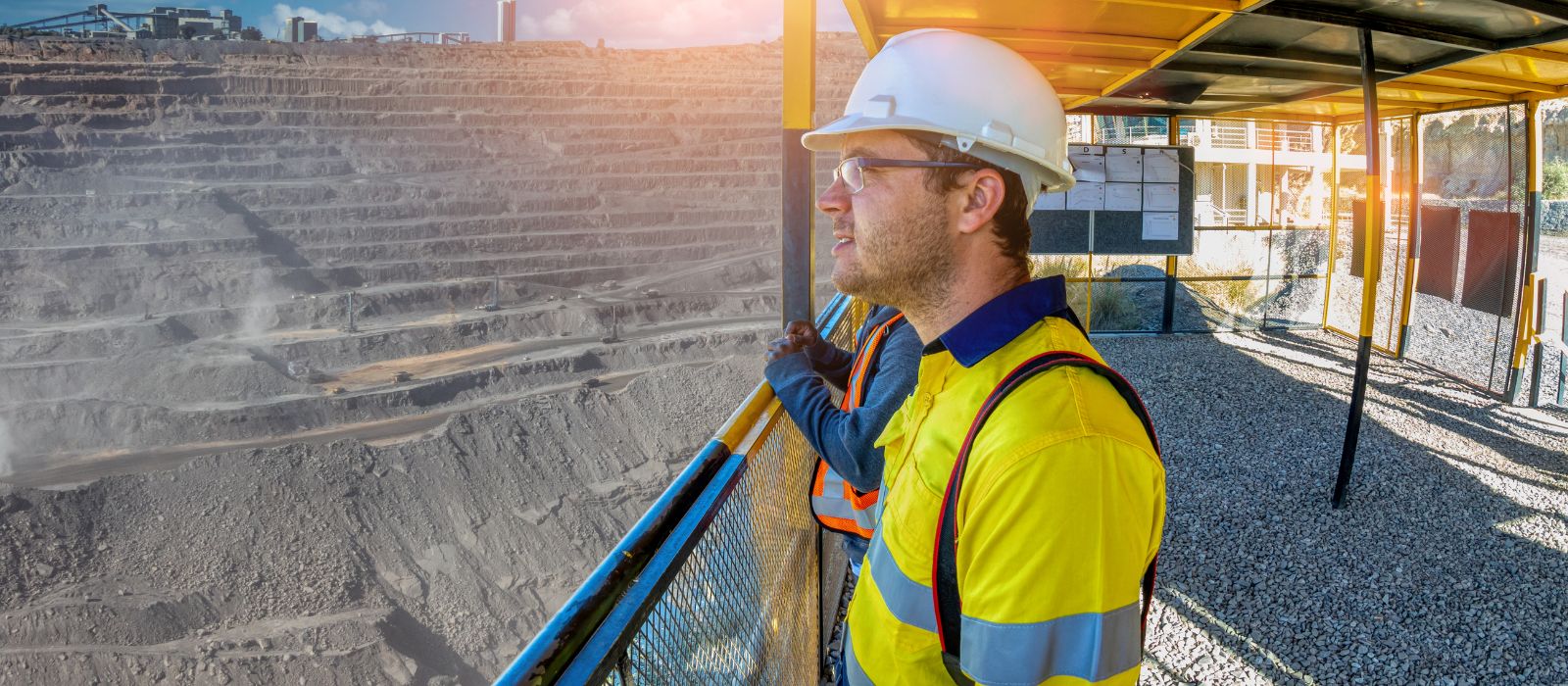
In November 2023, BloombergNEF reported that lithium-ion battery pack prices had reached a record low of US$139/kWh.
While learning curve cost reductions continue to drive down the costs of installing energy storage, the value of flexible, fast responding resources continues to increase, especially with the adoption of intermittent renewables and more dynamic unpredictable loads like electric vehicles. This has prompted many companies, including those in the resources sector, to investigate the viability and economics of adding battery storage to their power systems.
Consisting of one or more batteries that store electrical energy for later dispatch, a battery energy storage system (BESS) also includes an inverter and battery management system (BMS) which manages the battery chemistry.
BESSs offer a tremendous opportunity to provide multiple value streams in power systems including energy shifting, frequency regulation, spinning reserve, voltage support, backup power and black start, among others. When coupled with an intelligent and high-speed controller, a BESS can stack multiple value streams and fortify an integrated microgrid where renewable and traditional generation sources are kept in balance, providing the owner with a high degree of reliability and consistent power quality.
These qualities are particularly valuable for an ‘electrically islanded’ system, such as a remote mining operation, which cannot rely on the larger grid to help balance power fluctuations caused by renewable energy generation intermittency or other disruptions. Plus, a BESS offers benefits to islanded systems even in the absence of renewable generation by improving the efficiency of the existing fossil generators.
To quantify these benefits, PXiSE conducted an internal analysis, the results of which follow.
Analysis
The analysis sought to understand whether adding a BESS to an electrically islanded system was worth the cost. The analysed configuration included solar photovoltaic (PV), but results indicated that savings can be achieved with the BESS alone, without any renewables.
The analysis calculated energy generation costs for a system with twelve diesel generators and a peak load of 22.8 MW. The calculations included different scenarios with and without a BESS. At the heart of the analysis was the PXiSE controller, which acted as the ‘brains’ of the system, autonomously optimising the solar, battery, and diesel generation to meet system reliability needs with the lowest overall cost of energy.
Analysed system parameters
The following parameters in Table 1 were used in the analysis.

Tables 2 and 3 show diesel generator data:


*Note that in this scenario, one unit must always be online. Additional savings would be possible if this were not a constraint.
Generation and efficiency comparison with and without a BESS
The primary economic benefit of adding a BESS to the system was in the reduced spinning reserve demands on the diesel generators. The BESS provided spinning reserve, which reduced the diesel spinning reserve by 87%, thus reducing the quantity of online diesel generators needed at all hours of the day. Furthermore, by providing spinning reserve, the BESS enabled the online generators to run at higher loading rates, which use diesel fuel more efficiently, reducing the amount of fuel needed per kWh of generation (known as heat rate).
The BESS also reduced the amount of solar curtailment, enabling that energy to be fed directly to support load during peak production. The increase in renewable percentage and peak renewable percentage is attributable to this curtailment reduction.

Table 4 (above). Generation comparison.

Table 5 (above). Performance comparison.
Power generation by resource
The grey shaded area in Figure 1 represents the reduction in diesel spinning reserve offset by the BESS.
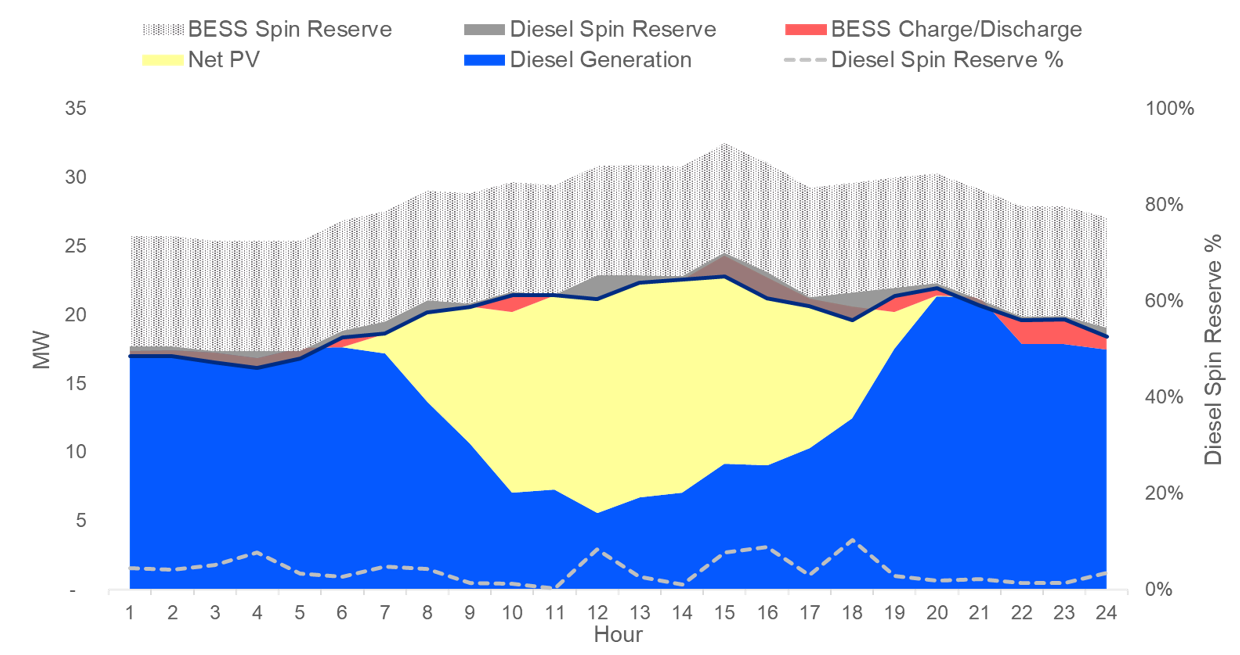
Figure 1. Power generation by resource.
Number of online generators
The bar charts (Figure 2) depict the number of generators that needed to be online before and after the introduction of a BESS. The addition of a BESS allowed one and sometimes two generators to be switched off.
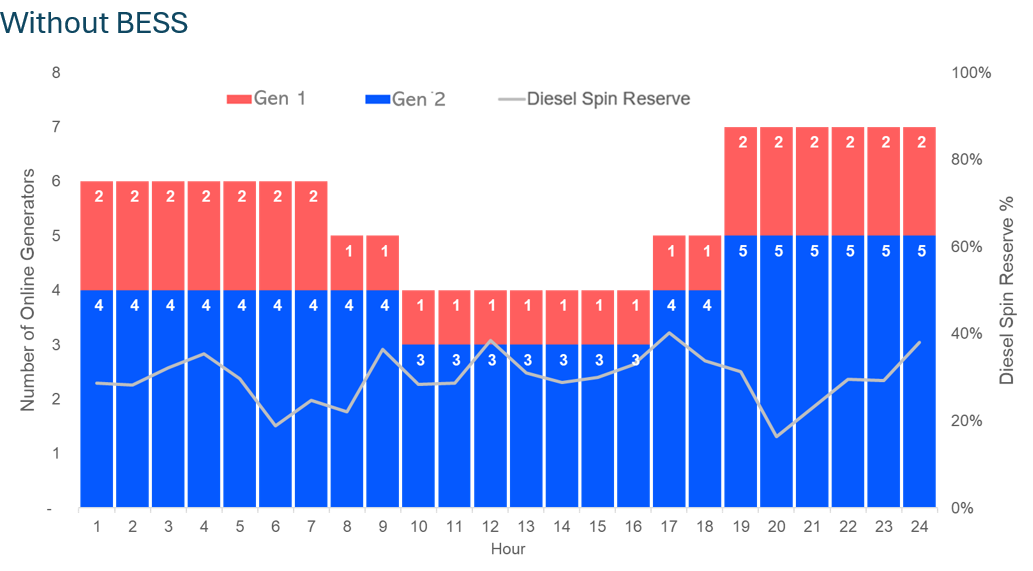
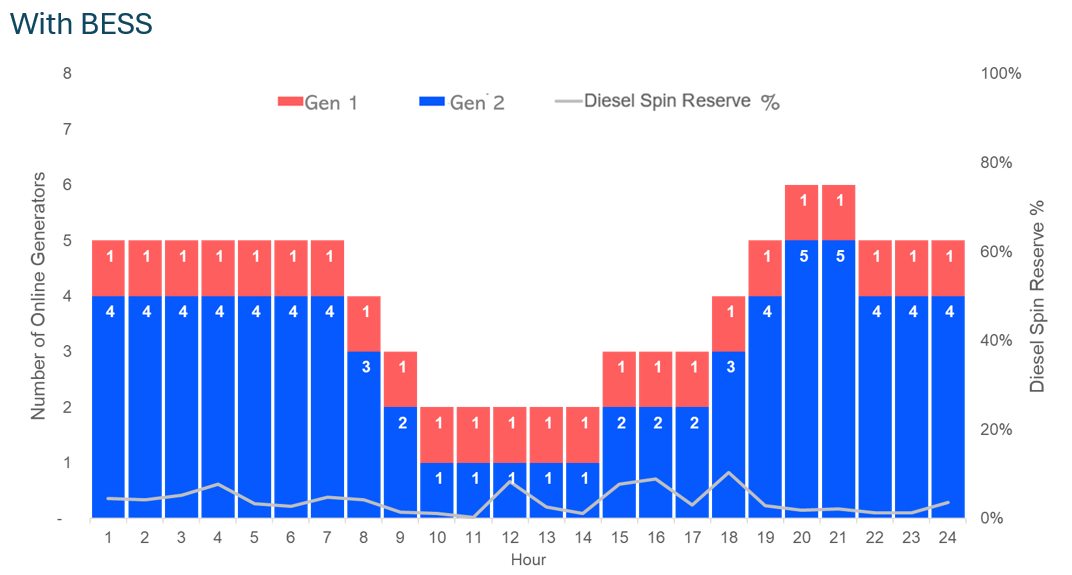
Payback
When the fuel and operations and maintenance savings are combined and pitted against CAPEX and OPEX, the BESS payback occurs within three years. The values in Table 6 are reflected in thousands of US dollars and are based on diesel fuel price projections from the Energy Information Association (EIA).
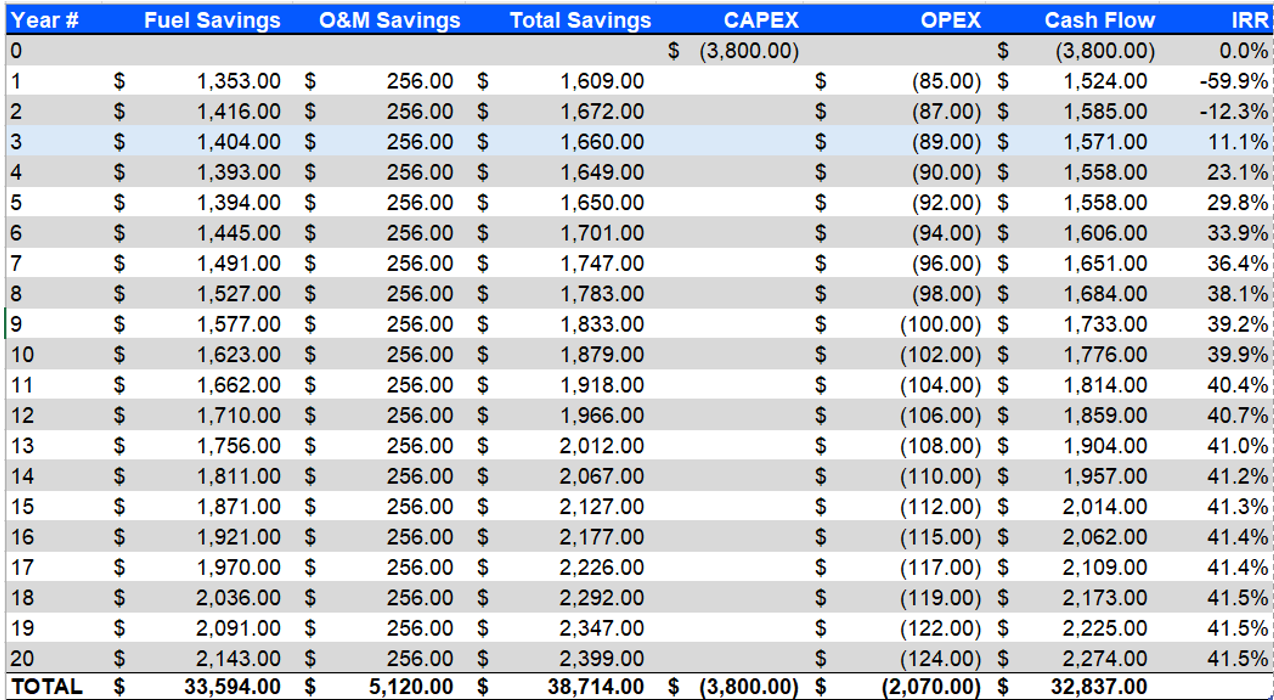
Table 6. Breakdown of fuel and operations and maintenance savings against CAPEX and OPEX.
High-level takeaways
The analysis concluded that when a BESS was coupled with the PXiSE controller, the controller could command the BESS to operate as the spinning reserve normally provided by the generators.
Consequently, fewer online generators were needed to meet load and spinning reserve requirements, reducing run hours and allowing the online generators to run more efficiently. The benefits of adding a BESS are summarised in Table 6 below.
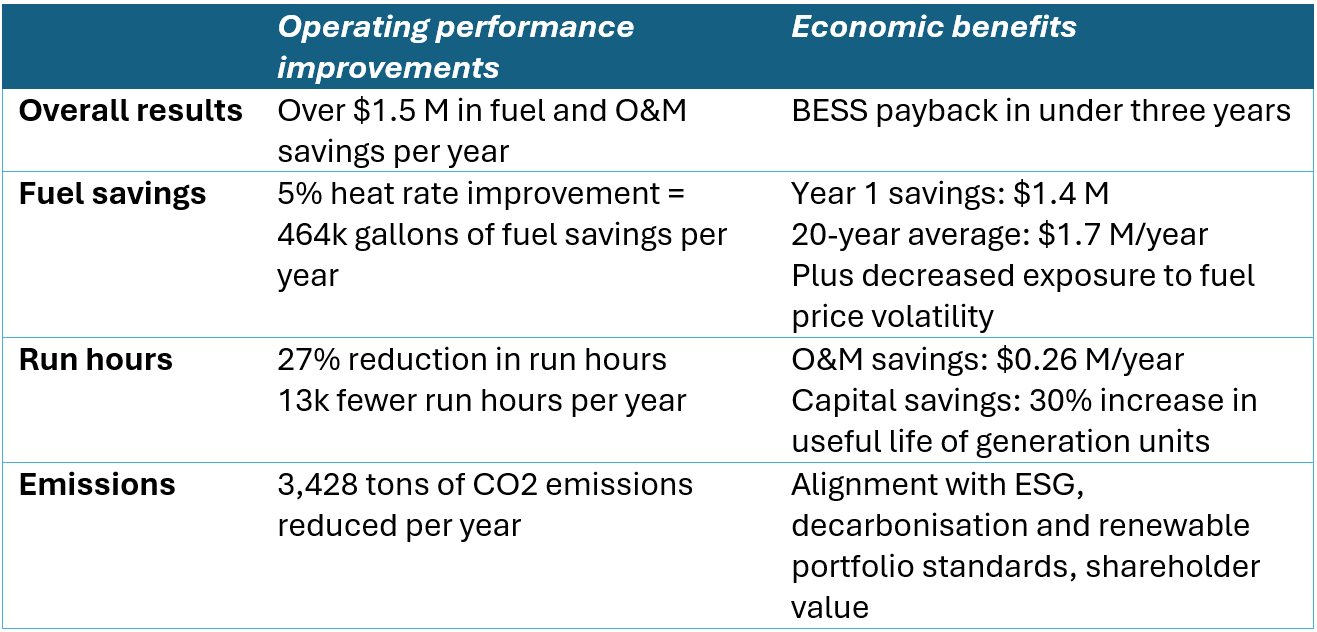
While this analysis didn’t consider every aspect related to a return-on-investment, it offers an excellent starting assumption that adding a BESS could be a worthwhile investment and that further investigation relevant to your specific application is warranted. Furthermore, the analysis indicates that adding a BESS now can initiate savings prior to adding renewable power generation sources, laying the foundation for renewables to be added later.
If you’re interested in learning more, AusIMM is hosting a webinar presented by Andy Miller on this subject on 15 May 2024. Members can register for free here